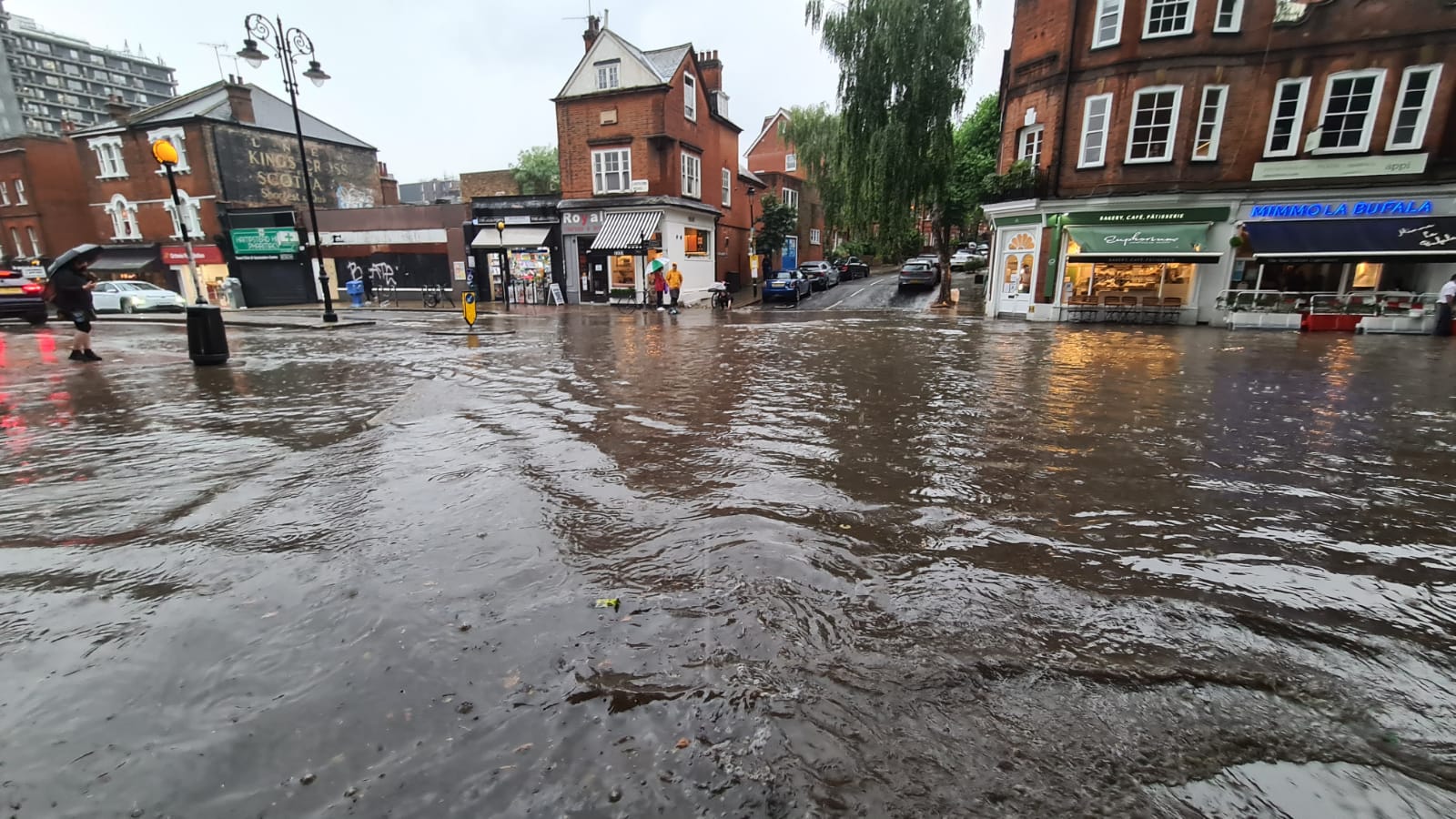Eco 2023: Flooding in Camden? Get used to it if we don’t act now!
Scientific evidence highlights the irreversible impacts that are already being experienced
Friday, 6th January 2023 — By Dan Carrier

Last summer’s flood in South End Green
FLASH floods that wreck homes and threaten lives are going to be become more frequent – and that means re-designing our streets and drains to be able to cope, a new report reveals.
A council-led study highlights the watery dangers we face due to the climate crisis – and offers practical measures that will guide policy for the next five years.
From stopping homeowners paving over front gardens to create driveways to making sure gullies and drains are clear, officials believe small actions can make a big difference alongside larger projects.
They include creating new storm relief drains, improving the sewer network and adding natural soakaway systems in high-risk areas. Last year, more than 100 households were severely hit by flash floods as summer storms dumped some of the heaviest rainfalls since records began in the 1890s.
Using data gleaned from two severe floods in July, the report highlights South Hampstead, South End Green and parts of West Hampstead and Kilburn as priorities for flood alleviation projects. Elsewhere, Dartmouth Park, Gospel Oak, Camden Town and King’s Cross have been identified as at risk.
The report focuses on how the climate crisis has greatly increased the likelihood of sudden downpours causing flash floods – and this can only be tackled by a joint approach from central government, local authorities, private businesses and individuals.

Councillor Adam Harrison
Environment chief Councillor Adam Harrison said: “Scientific evidence highlights the irreversible impacts that are already being experienced. We expect to see increases in the frequency of extreme weather and intensity of rainfall. “While we cannot prevent flooding from happening entirely, we will do everything we can to reduce the risk and have made significant strides.”
Over the past decade, work has seen new drainage systems installed in Camley Street and along the route of the River Fleet, large water storage systems installed in Camden Square and Russell Square, as well as projects to stop drains being overloaded during downpours. Work to counter some of the biggest threats have already been completed.
In 2014, Hampstead Heath guardians, the City of London, embarked on a project to future-proof the open spaces around the ponds from collapse.
Though criticised at the time by some civic groups, the City’s work has improved water quality and biodiversity, improved the look of the ponds and been hugely effective as a flood defence system, with the ponds holding back a number of severe storms in the past seven years.
Cllr Harrison added the Town Hall was working to secure more funding to “de-pave our public realm, turning the grey to green”.
The report lays out four key aims: studying which areas are at risk and why; funding anti-flood measures; informing residents how they can lessen threats to their homes; and reviewing how floods happen and working out how best to recover.
A key aspect is the age and type of sewer system Thames Water manage, the report says.
Many sewers carry both dirty water from homes and rainwater from streets – meaning a downpour can cause the drains to overflow – causing health risks as dirty water is pushed back into homes and on to streets.
New sewers laid by Thames Water must build in extra capacity, but much of the network is decades old and liable to suffer from overload.
Low-lying streets – at the foot of hills with water courses – are at greater risk and basement homes in the three areas the report highlights have reported a rise in floods. To compound matters, the report has found evidence that building sub- basements has caused widespread disruption to groundwater flows and has changed water table levels – increasing risks.